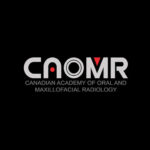- For Patients
For Patients
About Dental X-rays
What is a dental x-ray? Why do I need dental x-rays? Are dental x-rays safe? Other frequently asked questions. Learn more >
- For Students
For Students

Oral radiology offers diverse career possibilities in academia, research, and private practice settings. Many oral and maxillofacial radiologists combine some or all of these practice settings.
- For Dental Professionals
Dental Radiographs: Benefits and Safety

Benefits
A dental radiograph is an image your dentist uses to assess the health of the hard tissues (teeth and bones) of your mouth and surrounding facial structures. Radiographs enable dentists to detect cavities forming between teeth or under restorations (fillings), bone disease, periodontal disease, infections developing under the gums, or even tumours. A dental radiograph can also evaluate any injury to your mouth to aid the dentist in diagnoses and treatment. It can also reveal developmental problems in children or diseases before they become serious medical issues! Early detection of any defect or infection will not only limit permanent damage but will also prevent other areas of the body from being affected.
Dental x-rays are an essential diagnostic tool for detecting damage and disease not visible during an oral dental exam. The frequency that x-rays should be used depends on present oral health, age, the risk for disease and any signs of oral diseases like tooth decay. Children might need more frequent x-rays than adults because their teeth and jaws are still developing, while adults’ teeth may suffer from tooth decay less frequently. Your dentist will review your history, examine your mouth then decide if you need x-rays or not.
Safety
The amount of radiation used in dental radiology is very minimal as dentists follow the ALARA principle, “As Low As Reasonably Achievable,” when obtaining radiographs. This principle means they will only use as much radiation as needed to see what is going on with your teeth and care for them. We are all exposed to small amounts of “background radiation” from various sources every day, including the sun, soil, rocks, buildings, and even air and water. Every year, the average Canadian’s background radiation exposure is about 3.2 millisieverts (mSv, a unit of measure). By comparison, a bitewing exam (two or four images) exposes you to about 0.005 millisieverts, similar to one or two days of background radiation.
Dental x-rays are safe but require low levels of radiation exposure to work. Dental x-ray tools and techniques take every precaution to keep the risk of potentially harmful effects at a minimum, including using a lead apron or thyroid collar to shield the abdomen or thyroid against radiation.
If you are a new patient, your dentist may recommend x-rays to measure the present status of your oral health and create a baseline for future identification of changes. New x-rays may be needed to help detect any new cavities or evaluate the growth and development of teeth. If previous dentists have taken any radiographs of you, your current dentist may ask for copies of them, thereby eliminating unnecessary radiation exposure.

